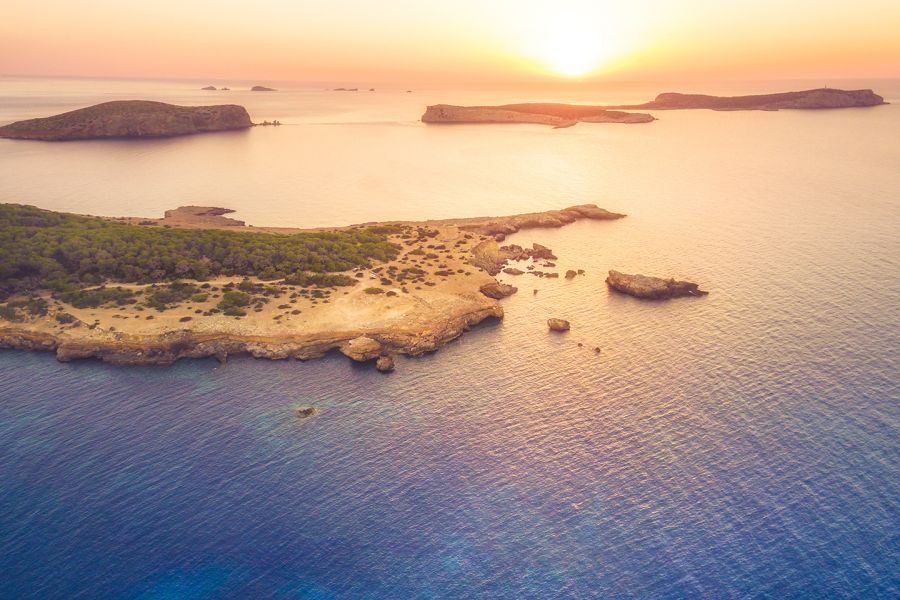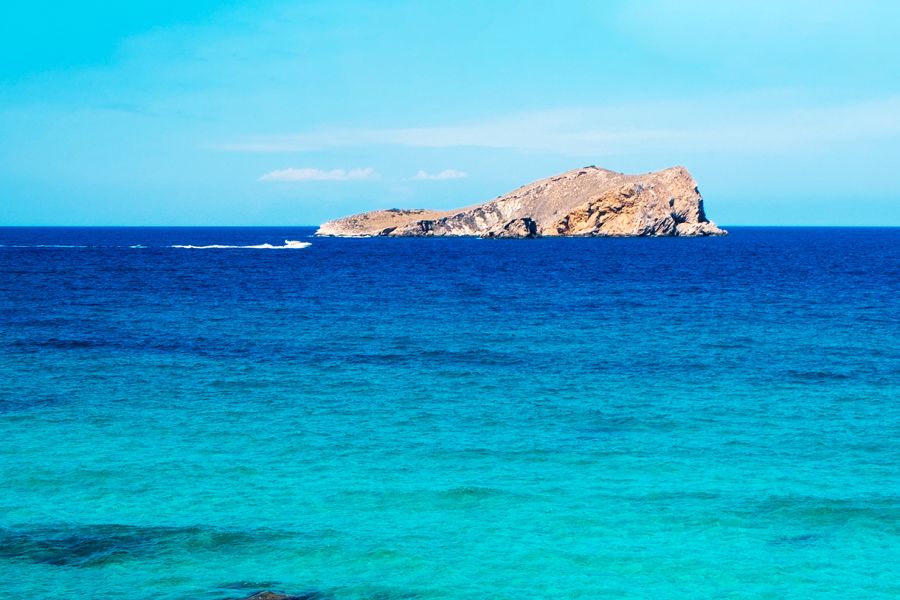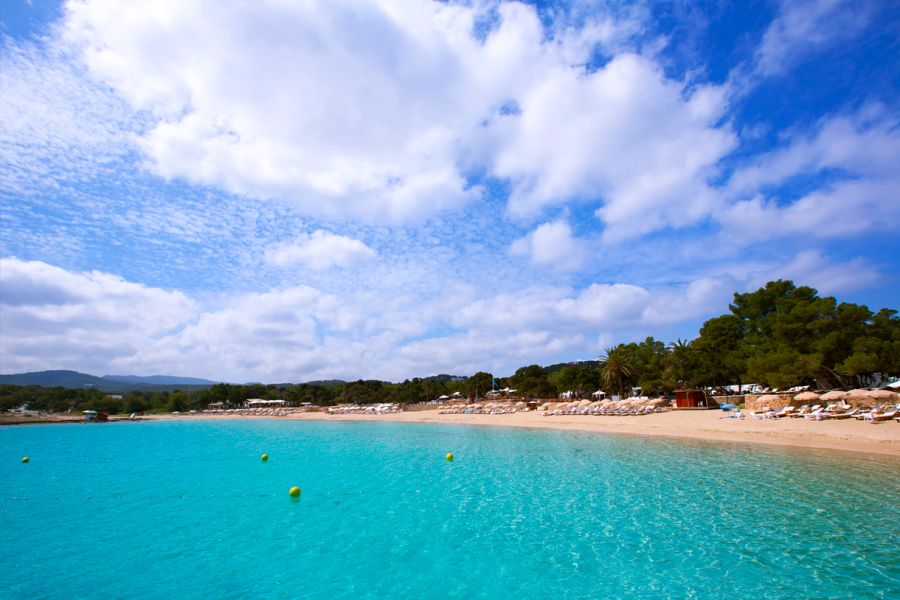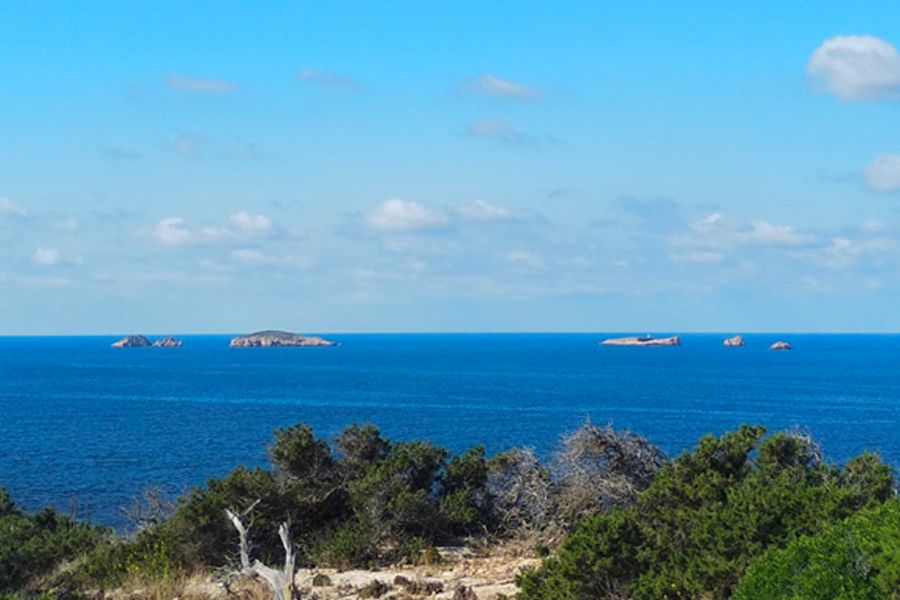The island of S'Espartar is located just six nautical miles from the port of Sant Antoni. Its average coordinates are: 38°57’29.73”N 1°11’43.30”E
This island does not have a lighthouse, but its uneven terrain with knolls of up to 70 metres high and with slopes of up to 50 degrees points to geological origins that are more turbulent than those of the nearby nature reserves.
Since time immemorial, esparto grass—which was so useful in the Punic, Greek and Roman textile industry—has been collected on this islet. There’s an anecdote or historical relationship with the origin of the name of this island and the origin of the word balear, whose common link lies with the Ibizan slings (called bassetges eivissenques in the Ibizan dialect), which were made of esparto grass. The word balear comes from the Greek etymological root word bal-leo, which means ‘to throw rocks’. This was a term that was probably coined for the feared Balearic hordes that were hired by the Carthaginian King Hannibal, son of Asdrubal, in the Second Punic War, who crossed the Pyrenees and the Alps with elephants to bring war to the very doorstep of the powerful Roman Empire in Italy around 218 BC.
This islet has an irregular shape and the slopes of its coasts are not narrow and steep. Along them, we can find an infinite number of places to shelter us from the winds. On one of the southern slopes, you can see a mound of stones placed in a very orderly manner. It’s been around for a thousand years and according to the local legends, it was a place of worship or burial of Punic-Phoenician origin.
There’s no way to determine whether this is fact or fiction, but what’s clear is that it was special to the people or ancient civilisation that created it. Its unnatural shape and its orderly arrangement leave no room for doubt that it is not the result of the random action of storms or winds.
This island boasts crystal-clear turquoise-green waters, as its relatively smooth bottoms show us a wealth of rocks with a great ecosystem of plants, fish and molluscs. You’ll realise there are live meadows of Posidonia oceanica once you see the darkness beneath the waters. The limpid waters invite you to enjoy the peace and quiet of the island provided the subsidiary rules of the nature reserves are followed.
Other locations
Stay up-to-date with what's new with us
Subscribe and leave us your email address to stay up-to-date with our news, what’s new and deals.






